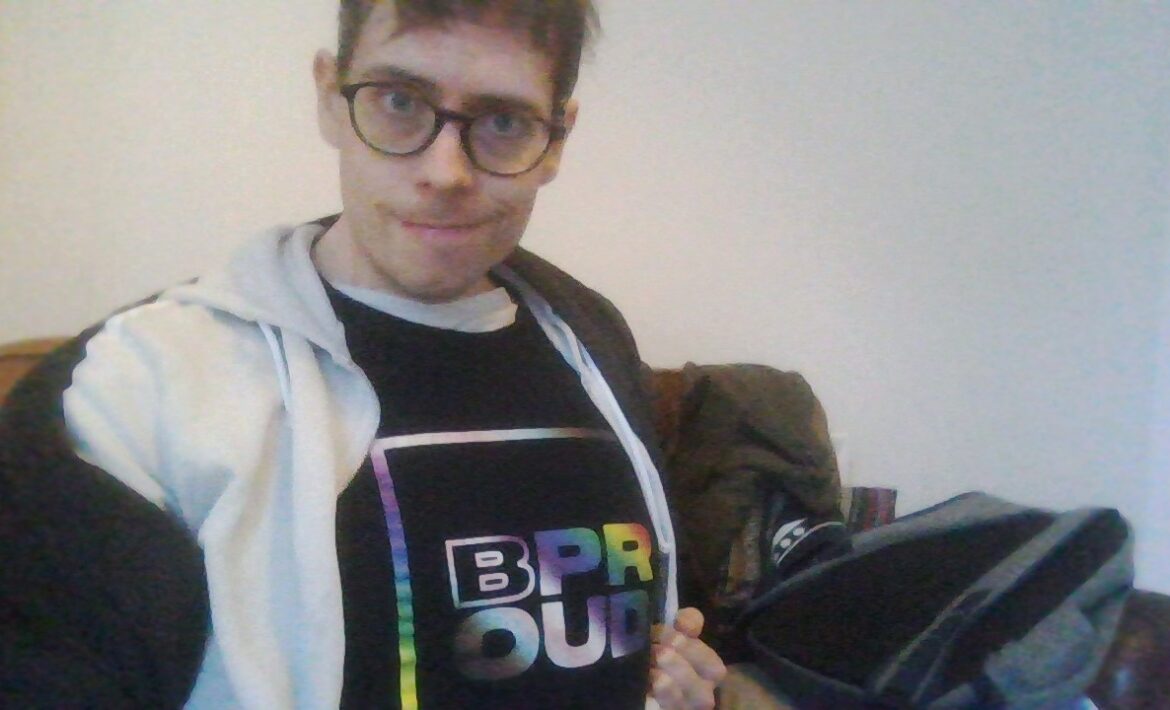
Monday 27th September 2021: On Mentalisation and Health Care Barriers
CW: Discussions of Borderline personality disorders and medical mistreatment. It’s another ranty one!
Hello everyone!
Thanks for the lovely reactions to last week’s blog. It’s good to be back.
I want to talk about something that, to me, is how to do storytelling well: a personal experience that signifies those of an entire community. I want to talk about borderline personality disorder diagnoses for autistic people.
When I was at an autism conference – when that was still happening in a world beyond our laptops – there was a speaker who decided to take the controversial view that autism was unnecessary as a diagnostic category. ‘Because if you look at the diagnostic criteria, you can see, they are identical,’ the speaker said. So why even have autism as a separate category? Why can’t all autistic people just accept that they have borderline?
At that, person after person began to peel off, some of them in tears. What’s the problem? It’s just two diagnoses that are similar in the DSM-V (the internationally-used American Diagnostic and Statistical Manual; essentially the recipe book for diagnosticians) – what’s the big deal? If it walks like a duck and quacks like a duck, it’s probably a personality disorder. What’s wrong with that logic?
A lot. As I’ve stated before, borderline – like schizophrenia before it – has the faint whiff of diagnostic ‘err… I dunno!’ about it. From my reading, borderline used to be a term reserved for cases that were ‘like’ schizophrenia, but not quite. They were on the borderline (I’ll leave the Madonna song for today, cheers). These people’s symptoms of self-injurious behaviour and anger towards themselves and others came without the hallucinations typical of schizophrenia and its ostensibly biochemical origins.
Interestingly, schizophrenia itself has moved from another ‘I don’t know’-diagnosis to a disorder signified by different forms of hallucination. In the beginning of the history of psychiatry, at the start of the 19th century, ‘schizophrenia’ was often used to describe aberrant behaviour of many sorts. Why this is problematic is obvious. No-one diagnoses mental illness in a vacuum and socio-cultural biases on the part of the clinicians are often a lot more important to why a specific person gets a specific diagnosis than what the patient is actually going through. More on that later.
Later, borderline personality disorder (BPD) or emotionally unstable personality disorder (EUPD) – depending on who you ask – were instituted to take stigma away from those diagnosed with these issues. It was clear, though, that people were suffering and that this suffering was psychological in nature.
Why I’m not a fan of the BPD/EUPD approach to people’s complex problems in society is that the diagnosis is uninterested in the origin of certain behaviours. The diagnostic criteria may say that someone is behaving in a certain way due to trauma, but isn’t actually interested in that trauma. At all.
2016…
In April 2012, I get a trifecta of diagnoses thrown at me. Besides chronic depression and anxiety disorder, I am diagnosed with personality disorder NOS: personality disorder ‘not otherwise specified’. Looking back through the haze of nine years and the buckets of medication I was on at the time, I was told by clinicians that they diagnosed me with this because ‘we can see depression, and we can definitely see anxiety. But apart from the fact that there’s something wrong, we don’t know.’
That stayed like this for four years. I reduce the benzos down to zero, I get back to and finish my Master’s. After that, I try – and fail – to find steady employment. In late 2016, I am at wit’s end, desperate to get any work at all and I find myself in a psychiatrist’s examination room. I am in a state of meltdown, at his suggestion that my panic attacks are due to borderline personality disorder. This was one of the many diagnoses that my father picked up in his 43 years of life. I am ashamed and ravaged with self-hatred. This only confirms to the psychiatrist that I’m a borderliner.
But! This does mean I can finally access some form of mental health support. I would be forwarded to the complex needs service in Oxford, the first therapy would be a group therapy session. I was nervous about this, since I’ve had bad experiences in group contexts before (see last week’s blog) and in early January I would have a meltdown at Oxford Mind and be banned for hitting myself when I was frightened of doing and saying the wrong thing. My ‘needs are too severe’ I am told as I’m shown the door and told never to return.
I start the group therapy sessions in early February 2017. They’re mentalisation-based therapy sessions. I didn’t know what that was either. Basically, to mentalise is to clearly understand one’s own mind and emotions and then, change them. I did the first set of sessions. I think I was the only autistic person present. I was still so terrified of saying and doing the wrong thing that I hit myself when I was corrected. Throughout the sessions, I started feeling more secure in myself, mostly because I was making money and losing weight. I was feeling less I couldn’t trust what my own mind was presenting me.
Tangent on masking
It’s worthwhile to understand what masking can do to someone. Sorry Paul for using your videos two weeks in a row, but I feel it’s worthwhile.
I had a conversation with a neurotypical about ten days ago, who said that no-one actually presents their true selves all the time. But, as I often say, the difference is one in both degree and in kind. Throughout my life, I was told repeatedly that my sensory information, thoughts and emotions are, essentially, bullshit. I had learned that I somehow was the least capable person to assess my own situation. I didn’t care about what I felt. I’d been taught that the more pain I felt, the less I deserved to exist. The more happiness I felt, the more embarrassing I was. The flatter I felt the more I thought that I was severely mentally ill.
Like Paul, I struggled with my authentic self. In fact, I pushed away myself because I was disgusted by myself because I was autistic and . I was the mask. When I was alone, I couldn’t stand the company. This was pretty hellish, since I couldn’t mask towards myself very well. I would drink and eat too much. I’d constantly look at the internet, either at comedy, porn or falling through endless rabbit holes.
The medical community talks about ‘learned helplessness’. That’s a response to trauma and is used as a diagnostic criterion for borderline, as well as PTSD. I was taught that my experience was always less important and valid than those of others, who were by definition more trustworthy. I was wrong and I needed to be punished.
This type of losing trust, however baroque my particular experience may have been, is common among people suffering from minority stress. It’s a form of trauma that comes from the societal discrimination attached to being part of a marginalised identity. Ironically, this is actually a majority of people in societies all across the world. It’s especially true with those who do not fit in even in the identities which they have found themselves in. Are we surprised autistic people find themselves in Kafka?
Back to the story
So, after I stopped hitting myself in the face, I managed to… not be put on the waiting list for further therapy. Instead I needed to wait, and wait, and wait some more to do another mentalisation course. This started in January 2018, after several serious meltdowns, job loss, an overnight sectioning and a change in medication.
This time I actually know a lot more about myself and about autism. I’m healthier and I’m no longer taking two drugs that directly counteract one another, intensifying my meltdowns (which, as stated before, Complex Needs Oxford could have easily googled). By now, I have read Neurotribes and I know about theory of mind and alexithymia, at least a bit. I know enough that I struggle to figure out what I feel and that ‘meltdowns’ are a part of being autistic, rather than just a humiliating failure to behave appropriately. Before this year, my learned response to meltdowns can be best described as the ‘puppy training 101, nose-in-its-own-urine’-approach. No longer, though.
This particular course has seen one of the facilitators leave and a man in his forties take her place. Their service is under severe stress. I’m now not the only autistic present, but the atmosphere is far more stressed. The group is more than twice as big, causing only little time for everyone and the facilitators have very little time for each individual person. The atmosphere is that of slowly boiling frustration. Of the facilitators with the group members, of the group members with themselves, each other and the facilitators and of everyone with the system that put is in this situation. Oxfordshire, in 2018, was one of the highest-classed localities in England on mental health and complex needs. This was because there was a service rather than no service. Not the highest bar to clear, but that’s mental health care for you in austerity Britain.
The main take-away from these sessions was: there is no time, no money, no nothing. All we could do was to ‘do mentalisation.’ The facilitators insisted on no conversation being allowed on the issues we were actually struggling with – just what happened this week. Trauma could not be discussed. We just have to engage with painful behaviour, observe our intense emotion rising, be aware of it rising, and change it to something better.
Mentalisation
Now, having read papers on MBT-therapy for autistics specifically, there is definitely validity in this approach if and only if the courses are designed for (and in my view by) autistic people themselves. By doing so, ASC-MBT will take into account how we struggle with our sense of self and the divergent ways in which we learn to understand what and how we feel.
This was absolutely not the case here. The course was designed as a gateway. First we need to learn how to mentalise, then we could go on a potentially-two year long waiting list for further therapy. If we don’t, then our borderline diagnosis stops us from accessing any therapy on the NHS, at least in Oxford, at least in 2018.
The results were obvious. I desperately try to mentalise when the facilitators discuss painful topics and try to find a way through. During the third session I finally tell the main facilitator, who I’ll call Ed. “Ed, I’m really sorry, but I’m autistic. I have alexithymia. You’re saying that I need to change an overwhelming emotion before it becomes overwhelming. I don’t know I even have the emotion before it becomes overwhelming! How do I do that? Please tell me!” Instead of responding supportively, he shouts at me: “You need to shut the fuck up now. I’ve been a psychotherapist for fifteen years and I’m not going to be told how to do my job by a 30 year old who doesn’t know anything about this. You need to shut up and do it. If not, there’s the door.” I shut down for the rest of the session. I’m kept behind afterwards, with one of the facilitators looking at me with pity. Ed’s eyes are shooting lasers. I repeat, tears in my eyes: “I’m sorry, but you keep on saying I should just do it. How do I do it? How?” ‘We can’t tell you. You have to figure that out for yourself.’ Ed says: ‘Your behaviour has been unacceptable today.’ I didn’t say anything, I just left.
The next week I found out that I was be unilaterally discharged. I received no further support from Complex Needs after that. Or at all. I in fact was not able to access any NHS mental health care at all until I worked with a psychiatrist in early 2020. He changed my BPD diagnosis to Complex PTSD. This has allowed me far greater opportunity and access to mental health services and increased support. Or at least it would have done, if there still existed a social safety net. Ah well.
But – er, that’s just you right, Jorik?
Er, no. It’s not. Many autistic people, especially autistic women, spend years getting misdiagnosed before eventually getting a diagnosis that meets their needs. What’s the most common diagnosis? Borderline personality disorder. Autistic people are seen as ‘difficult’, in a way that baffles the clinician, so they just throw a BPD diagnosis onto them in lieu of anything more specific. Now, in an even remote fair world, this would mean that there would be resources available for people to learn more about themselves and gain greater awareness, in a kind atmosphere. But obviously we live in the worst of all possible worlds when it comes to disability rights. Of course, as I’ve shown, the approaches used for personality disorders in complex needs services are punitive and do nothing but exclude people based on diagnostic criteria they usually don’t even meet.
Now it is possible to be autistic and have BPD or another personality disorder. But this has to be treated within a neurodiversity-informed therapeutic setting, with understanding clinicians who know what they’re talking about. But, again, that’s not the world we live in. Why did people leave in droves from that talk I mentioned at the top of this blog? Well, this is why.
Conclusion
The reason a person gets diagnosed with mental health issues and developmental differences is in order to gain access to support methods so as to undo the inequalities that exist between them and their non-disabled peers. However, in practice, the outcomes seem very much the opposite. There is a disconnect across the clinical field between the study of psychological issues and the basis for these people to seek help after things get unbearable.
The mentalisation based therapy as provided by Complex Needs in Oxford, back in 2018, was either ignorant of how autistic people are impacted by issues specific to them, leaving autistics to fail the mentalisation course – or were they purposefully selecting for only neurotypicals to move to different therapies, leaving autistics to fail the mentalisation course. Whichever it was, either of those is unacceptable. I fear it’s actually the first one, since neurodiversity awareness in mental health provision is over a decade behind where it should have been by now.
Meanwhile, to close off this particular rant, we have Jessica Kellgren-Fozard here, being brilliant.
See you next week!
Love,
Jorik
Notes:
Much of this blog is highly influenced by my research into the history of psychiatry, particularly:
Tom Burns, Our Necessary Shadow (2013) https://www.penguin.co.uk/books/181/181697/our-necessary-shadow/9780241954430.html
Steve Silberman; Neurotribes https://www.penguinrandomhouse.com/books/310415/neurotribes-by-steve-silberman-foreword-by-oliver-sacks/



oxfordshire mind are a waste of space in my experience, as are talking space.